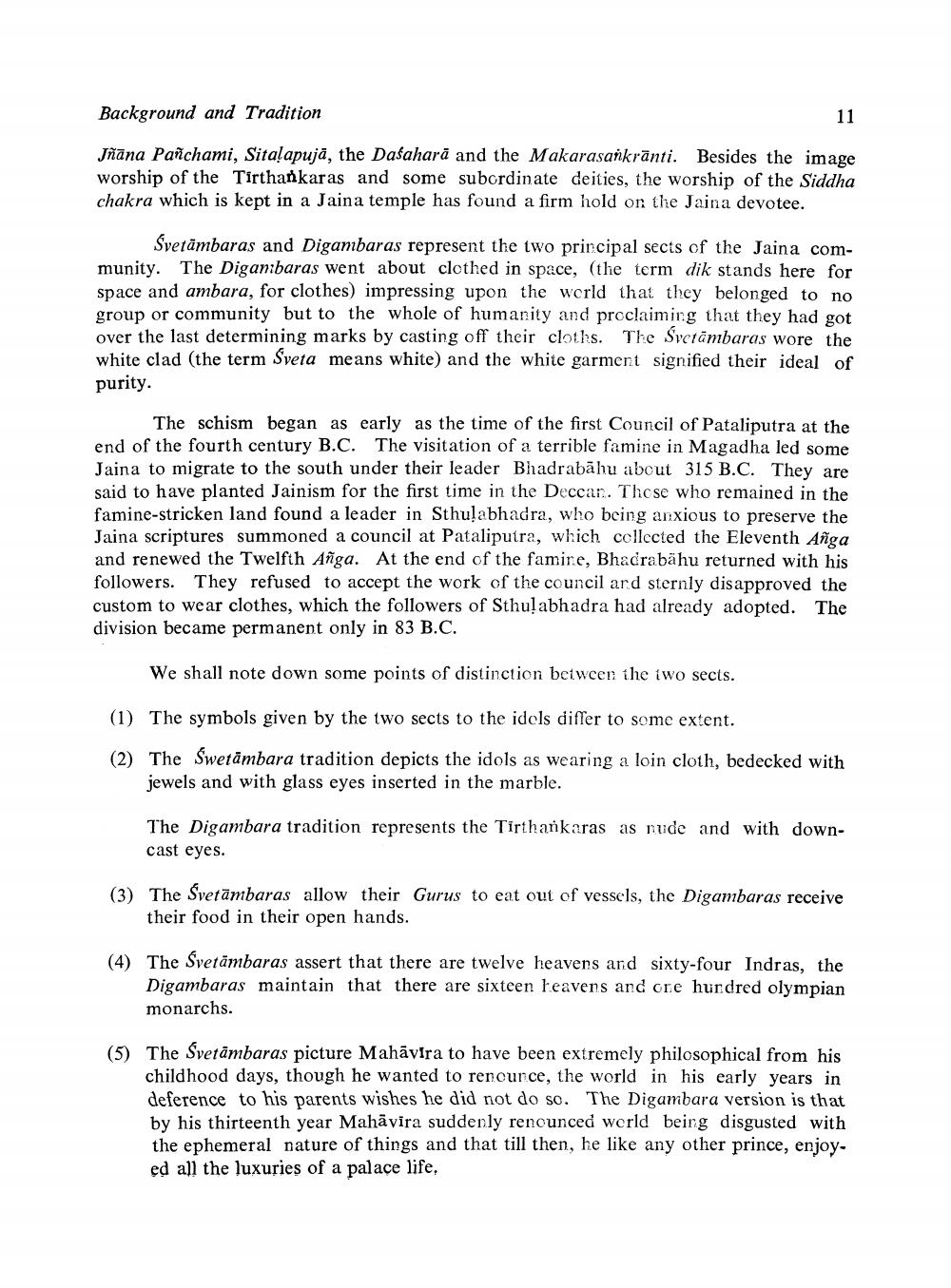________________
Background and Tradition
11
Jñāna Panchami, Sita!apujā, the Dasaharā and the Makarasankrānti. Besides the image worship of the Tirthankaras and some subordinate deities, the worship of the Siddha chakra which is kept in a Jaina temple has found a firm hold on the Jaina devotee.
Svetämbaras and Digambaras represent the two principal sects of the Jaina community. The Digambaras went about clothed in space, the term dik stands here for space and ambara, for clothes) impressing upon the world that they belonged to no group or community but to the whole of humanity and proclaiming that they had got over the last determining marks by casting off their cloths. The Svetämbaras wore the white clad (the term Sveta means white) and the white garment signified their ideal of purity.
The schism began as early as the time of the first Council of Pataliputra at the end of the fourth century B.C. The visitation of a terrible famine in Magadha led some Jaina to migrate to the south under their leader Bhadrabāhu about 315 B.C. They are said to have planted Jainism for the first time in the Deccan. Those who remained in the famine-stricken land found a leader in Sthulabhadra, who being anxious to preserve the Jaina scriptures summoned a council at Pataliputra, which collected the Eleventh Anga and renewed the Twelfth Anga. At the end of the famine, Bhadrabähu returned with his followers. They refused to accept the work of the council ard sternly disapproved the custom to wear clothes, which the followers of Sthulabhadra had already adopted. The division became permanent only in 83 B.C.
We shall note down some points of distinction between the two sects.
(1) The symbols given by the two sects to the idels differ to some extent.
(2) The Swetambara tradition depicts the idols as wearing a loin cloth, bedecked with
jewels and with glass eyes inserted in the marble.
The Digambara tradition represents the Tirthankaras as nude and with downcast eyes.
(3) The Svetāmbaras allow their Gurus to eat out of vessels, the Digambaras receive
their food in their open hands.
(4)
The Svetämbaras assert that there are twelve heavens and sixty-four Indras, the Digambaras maintain that there are sixteen leavens and one hundred olympian monarchs.
(5)
The Svetāmbaras picture Mahāvira to have been extremely philosophical from his childhood days, though he wanted to renounce, the world in his early years in deference to his parents wishes he did not do so. The Digambara version is that by his thirteenth year Mahāvira suddenly renounced world being disgusted with the ephemeral nature of things and that till then, he like any other prince, enjoy. ed all the luxuries of a palace life,




